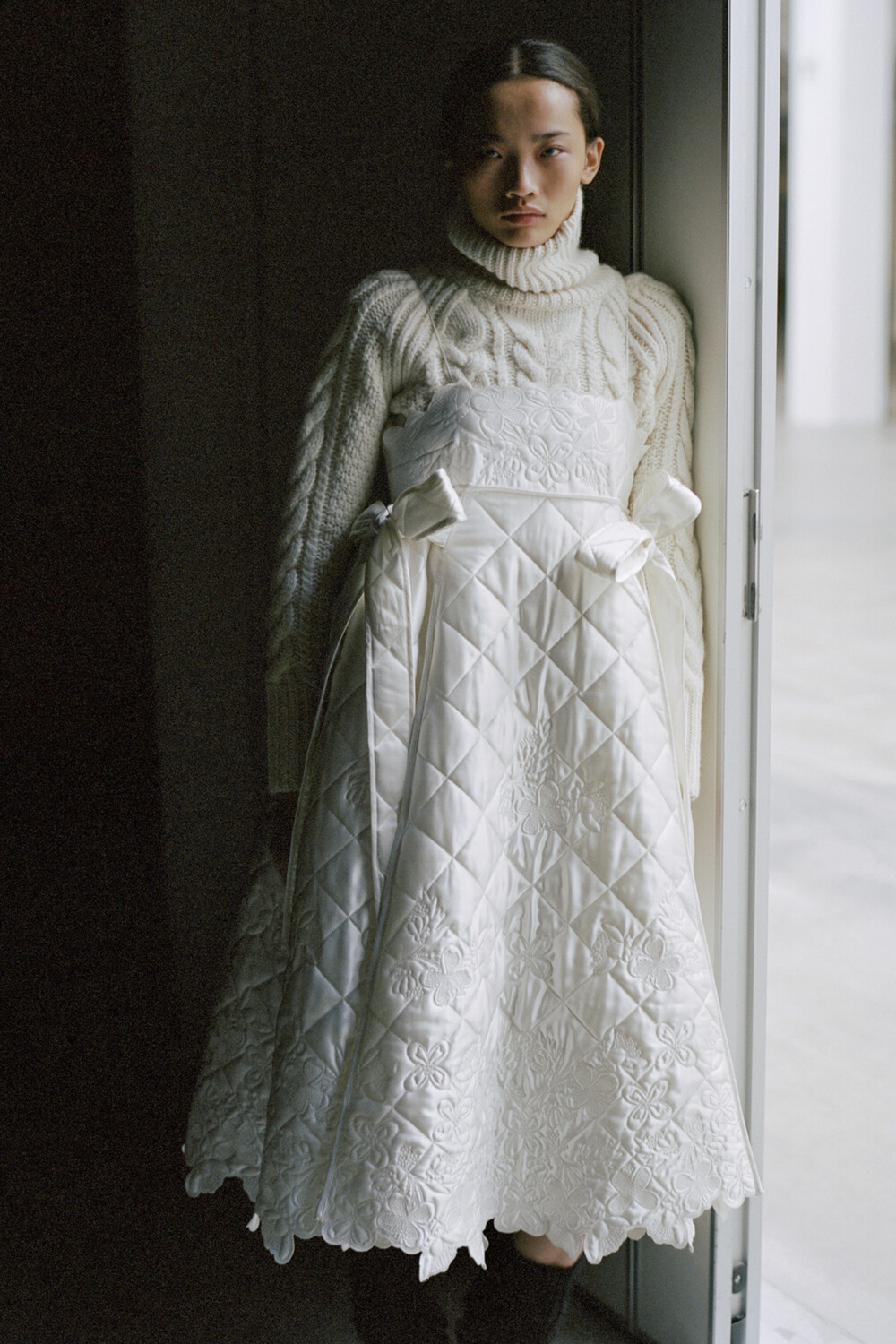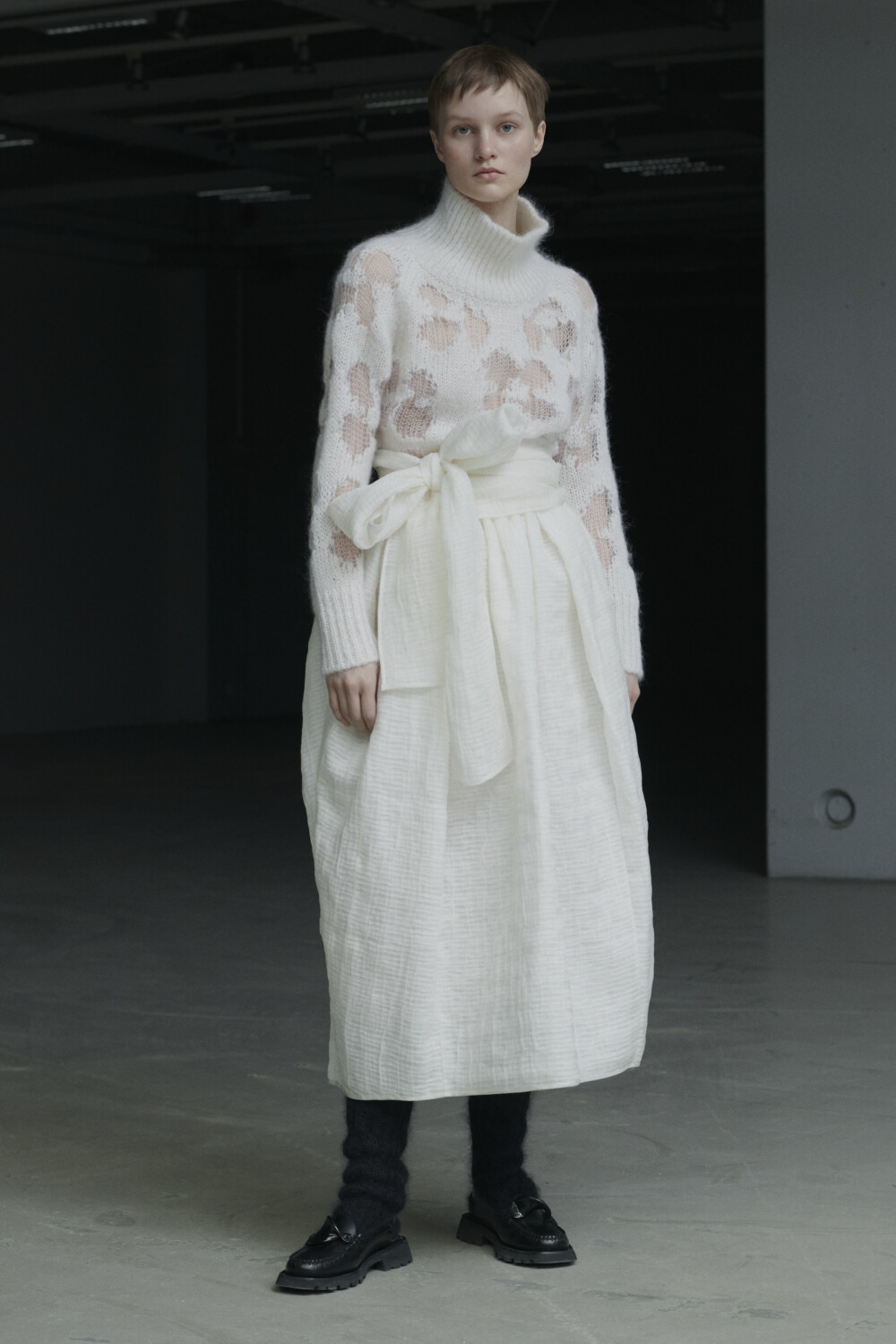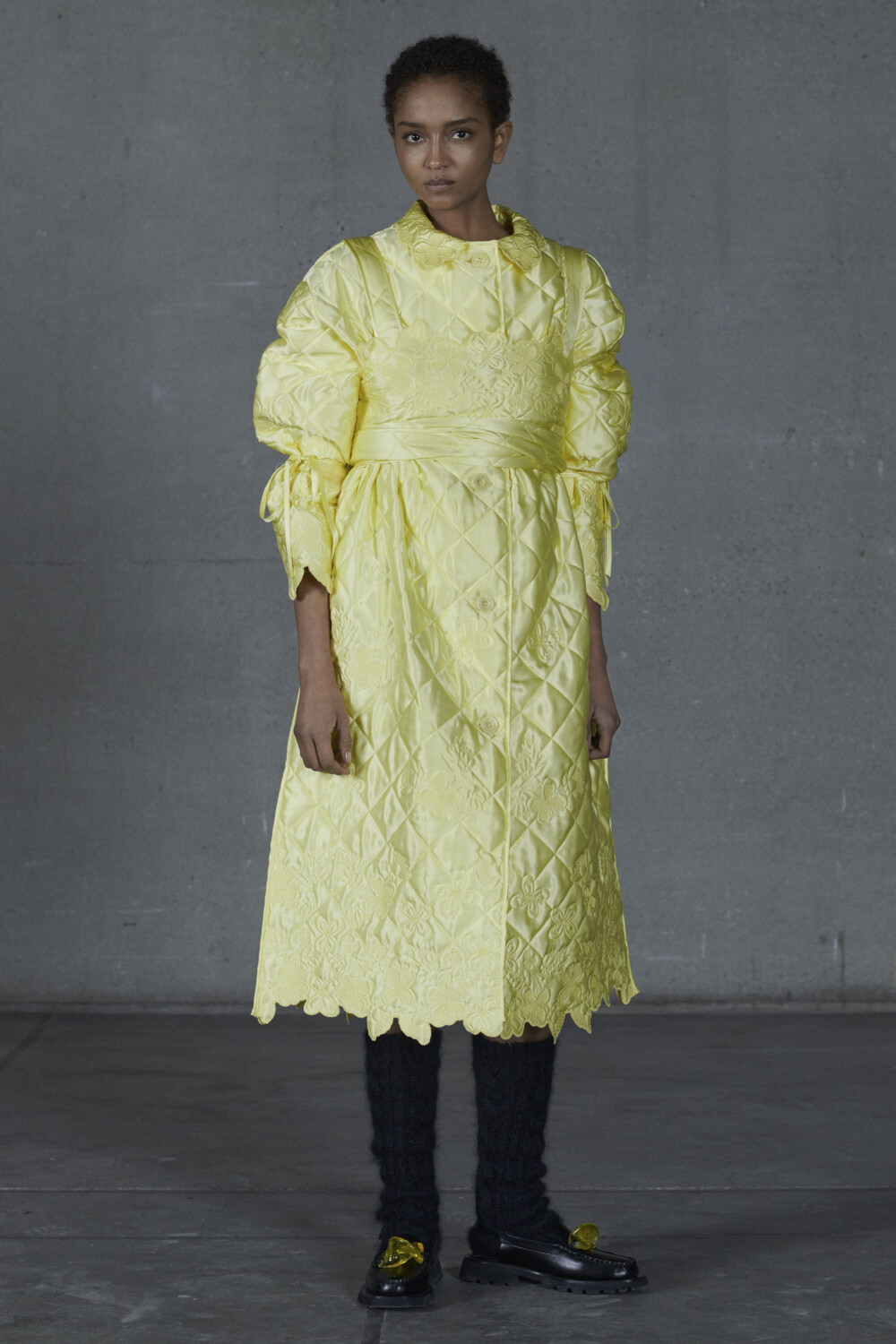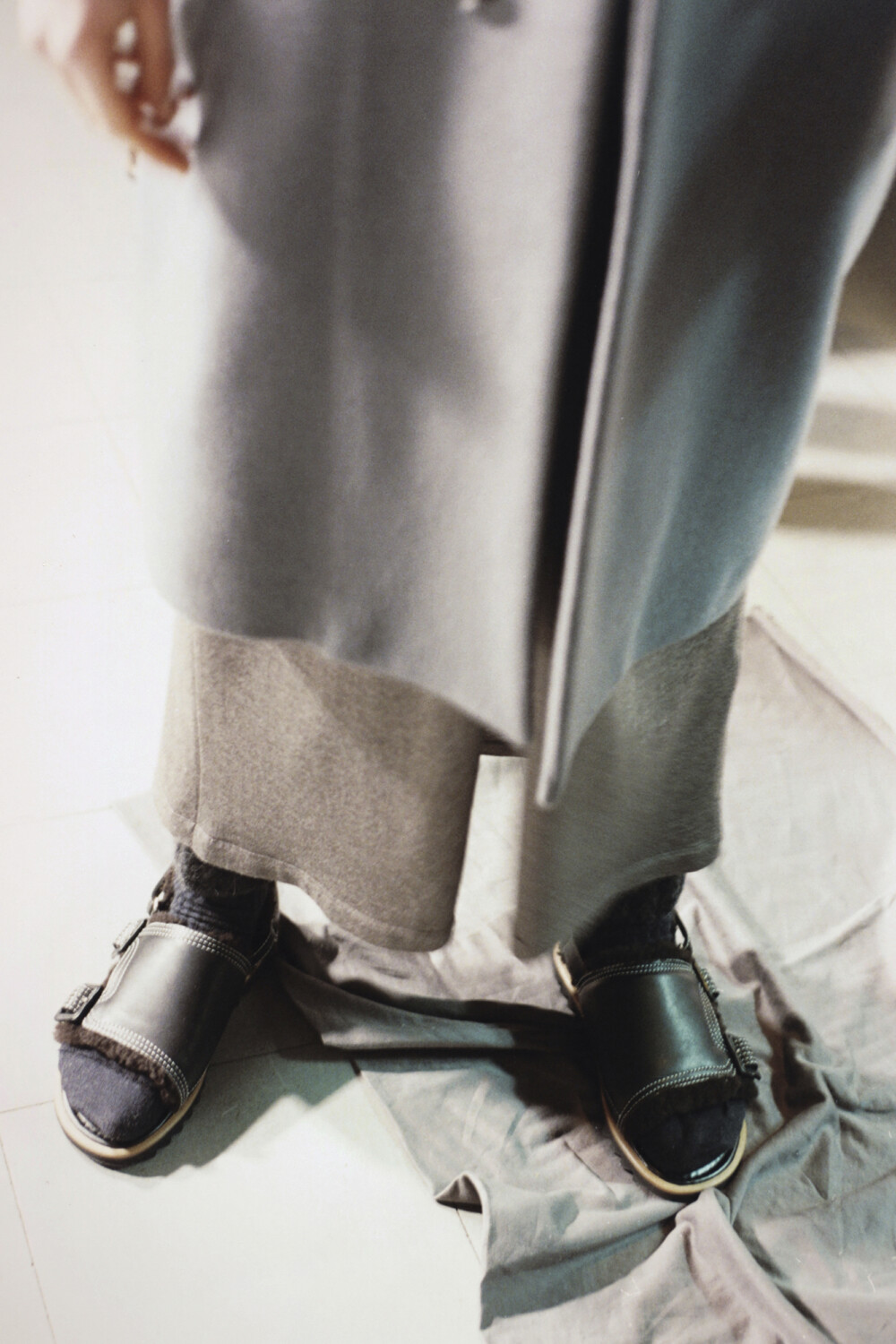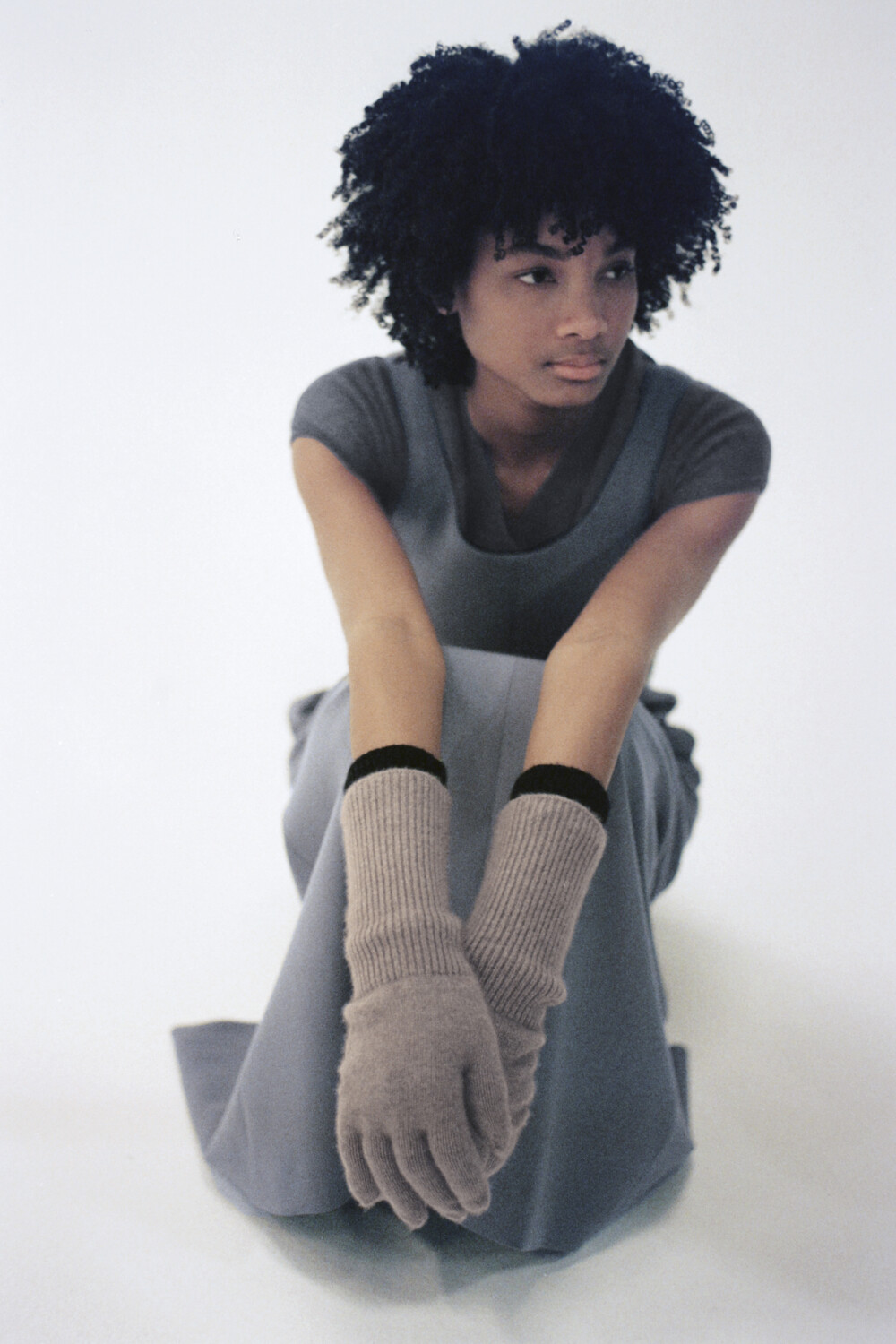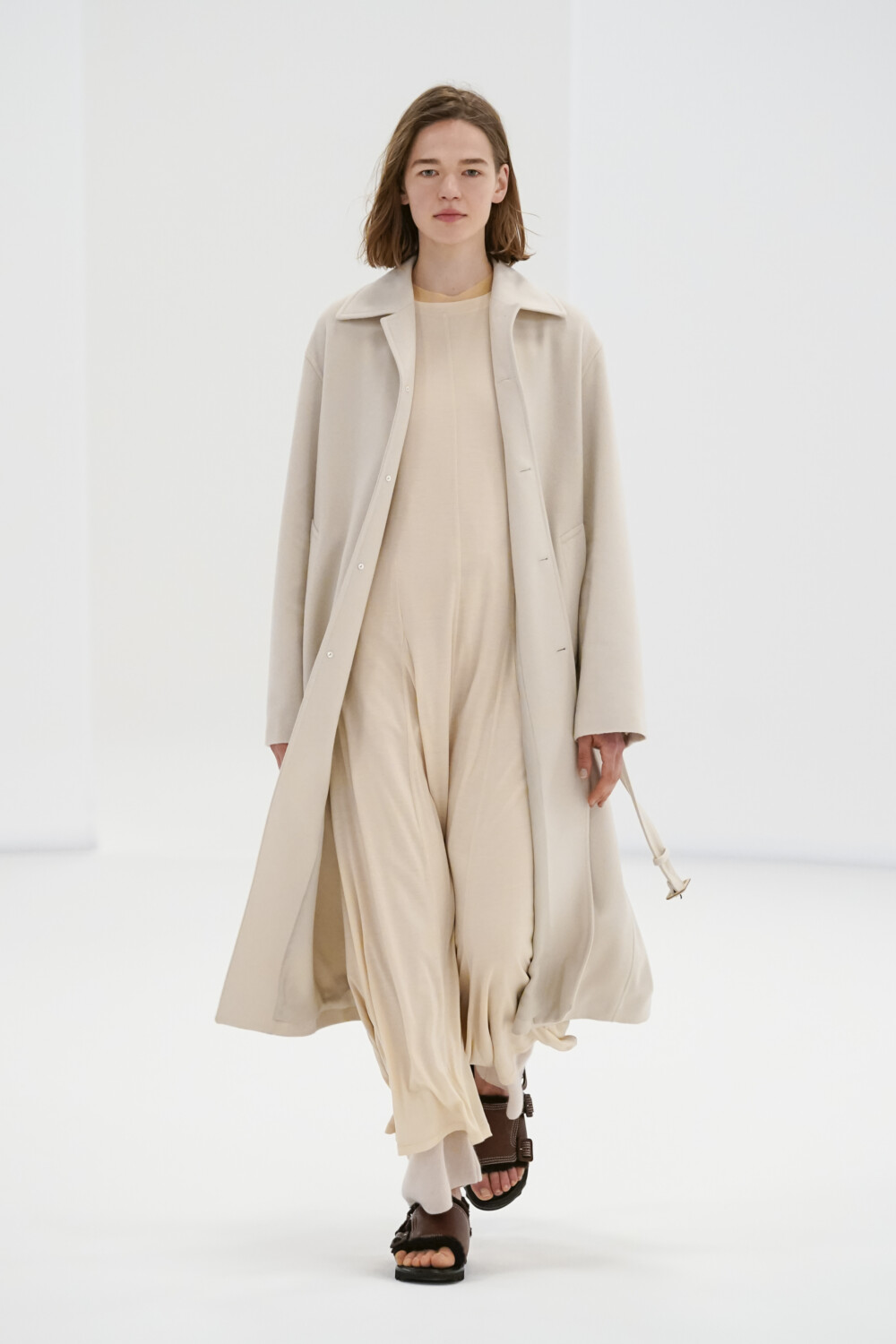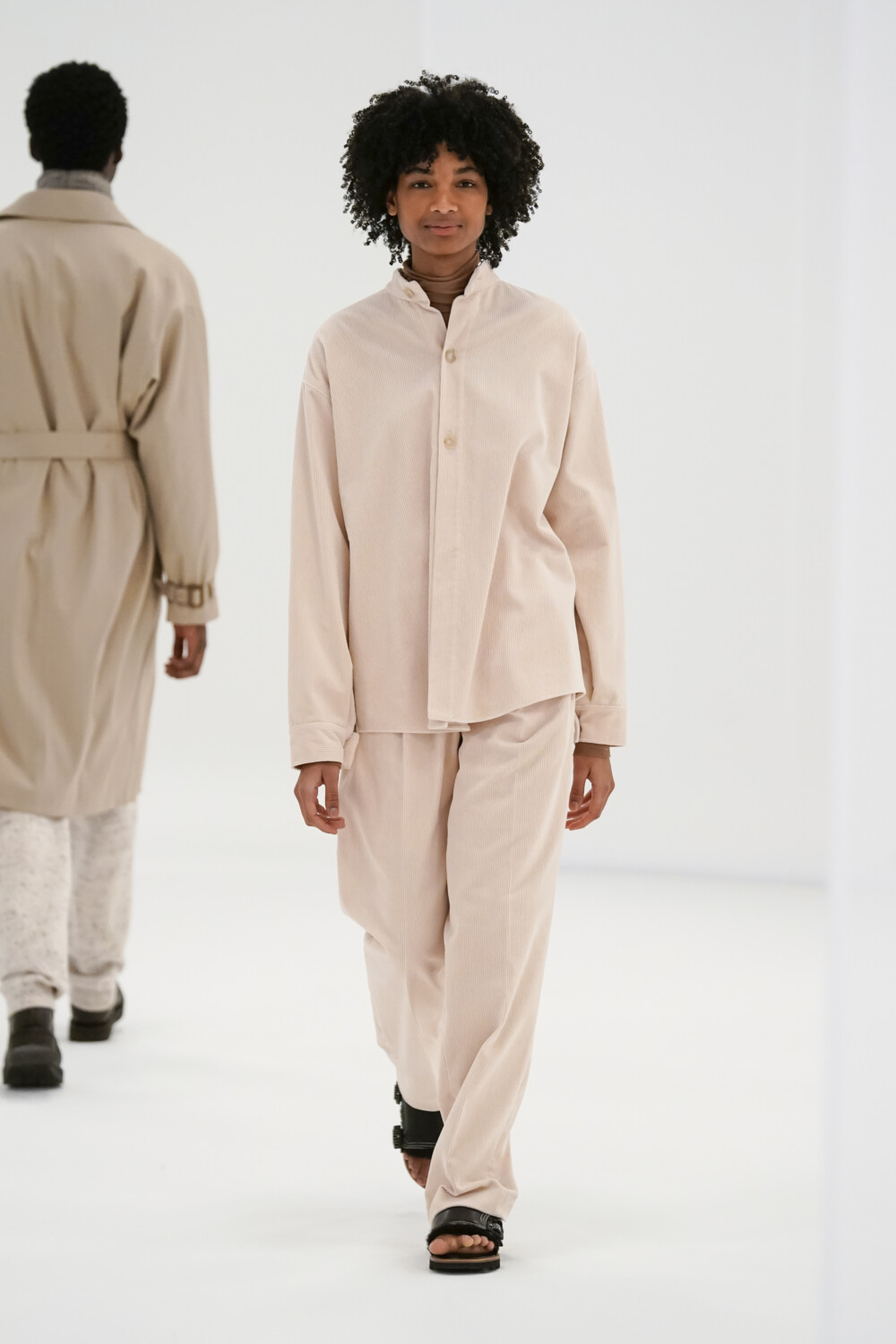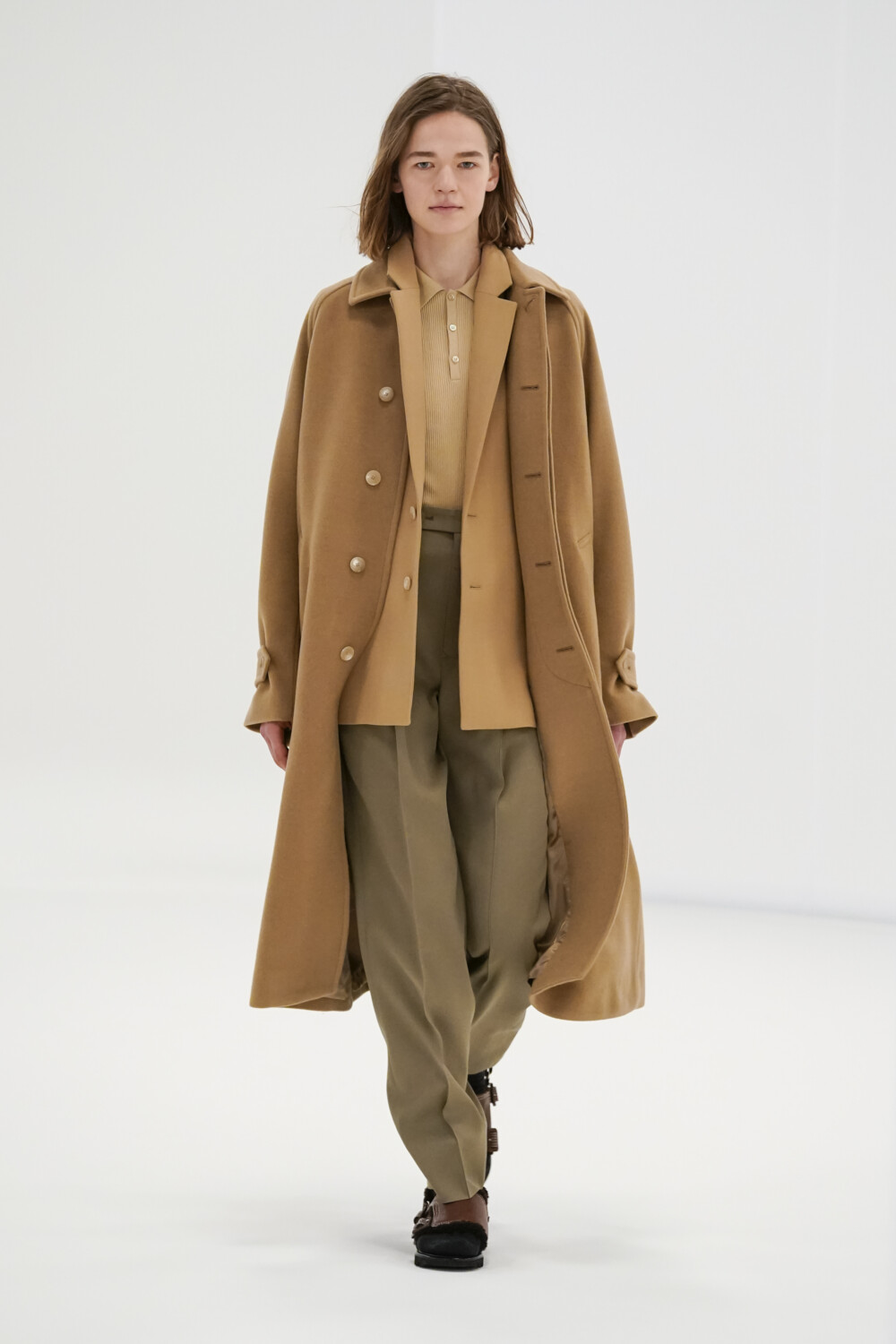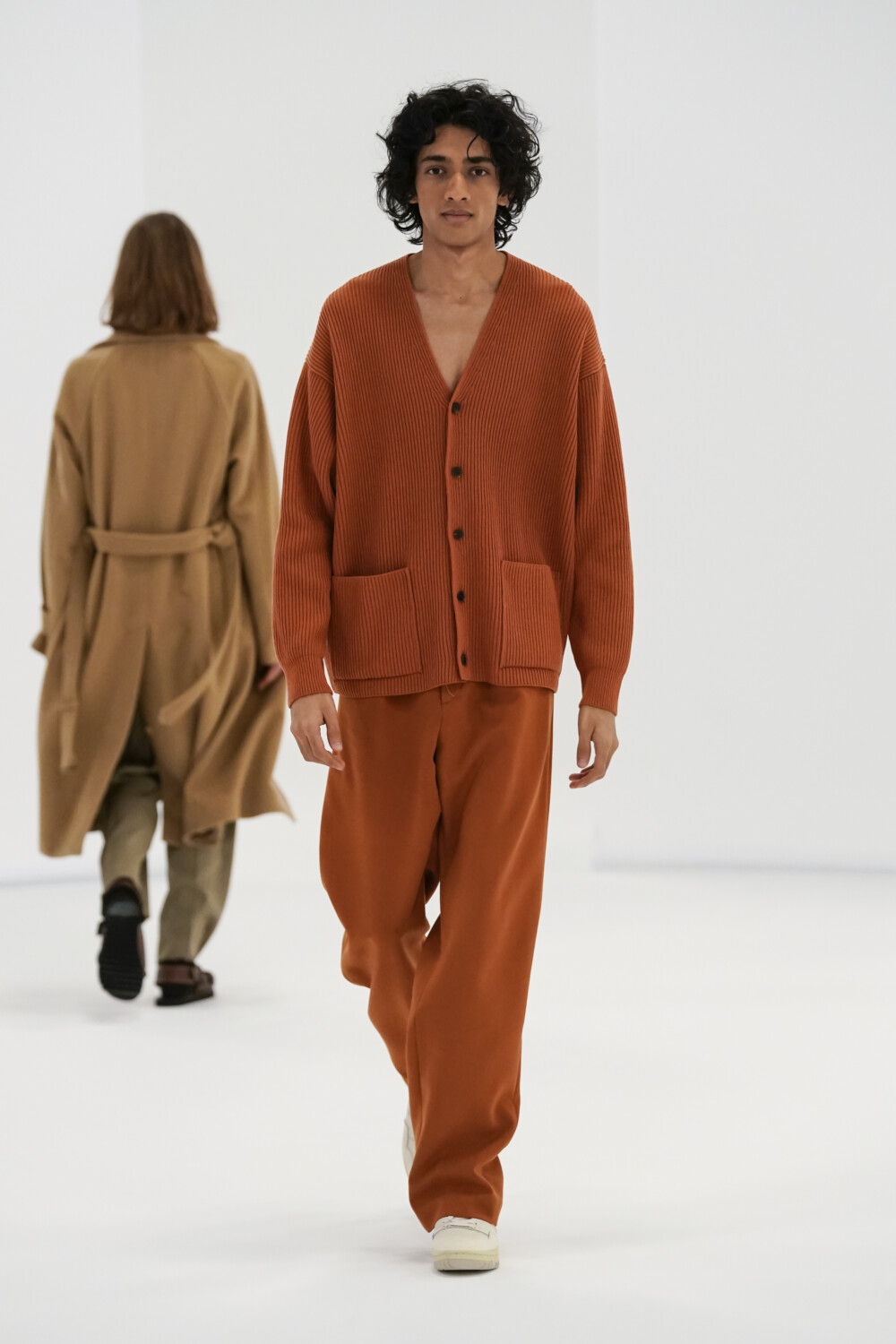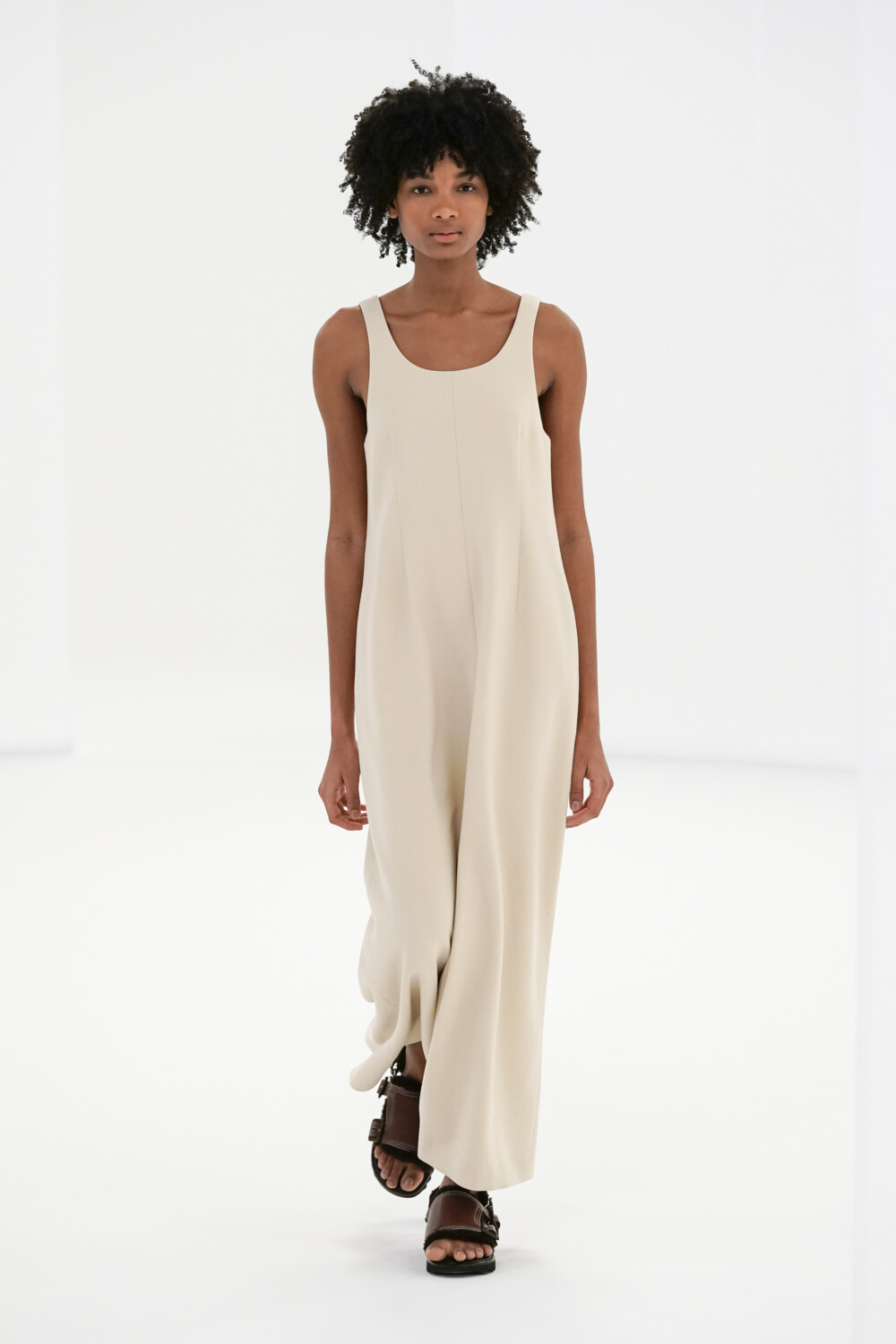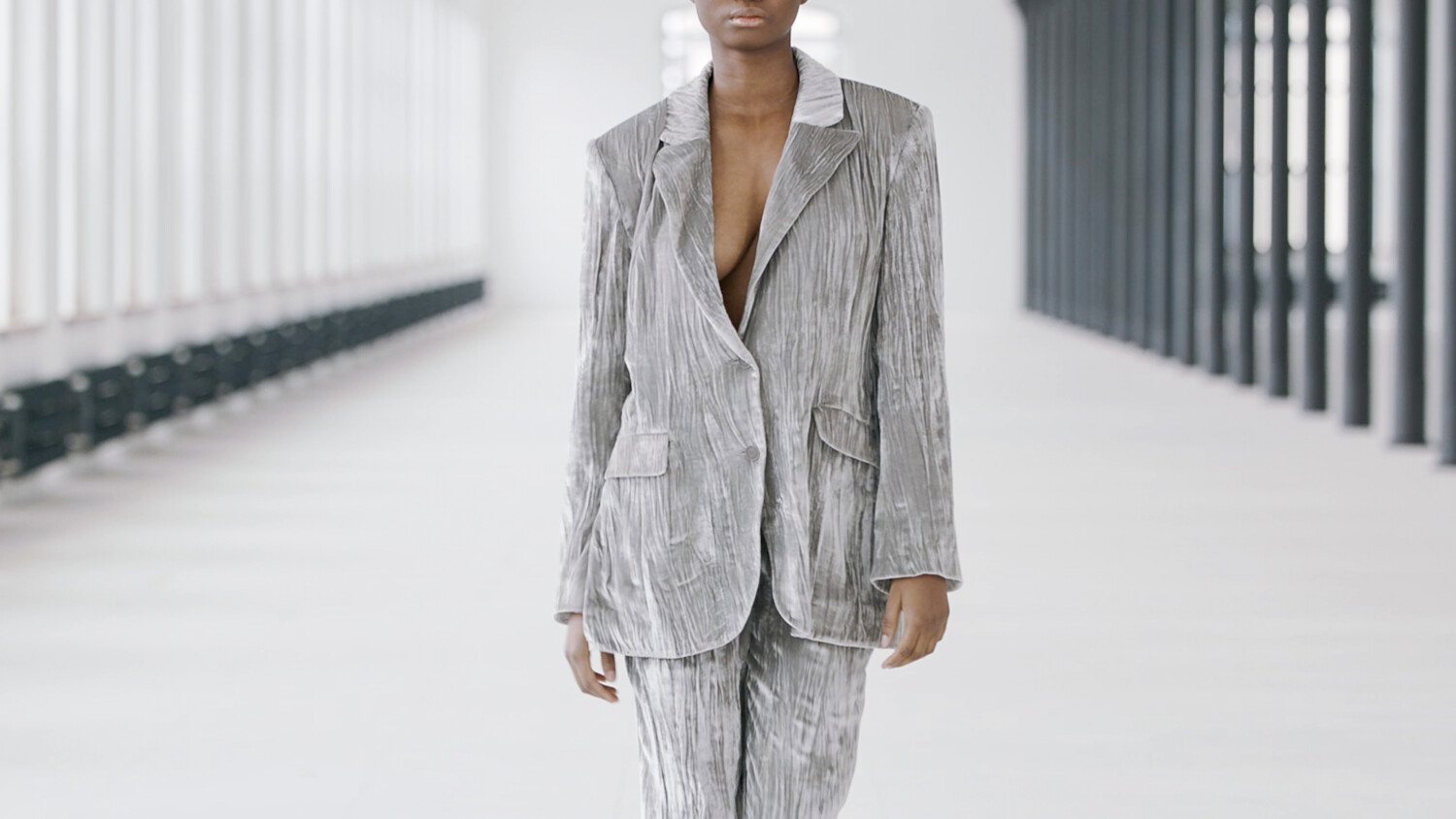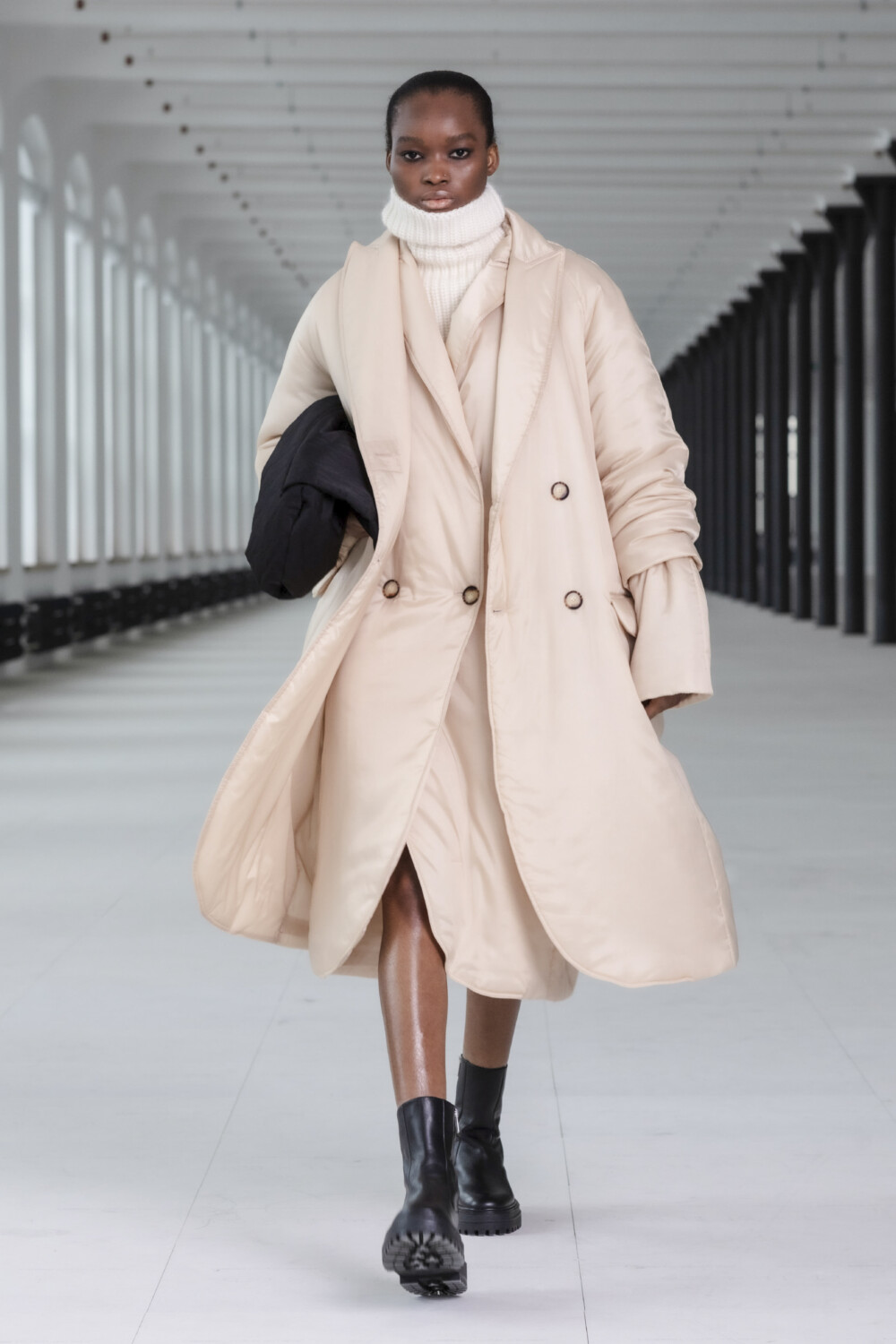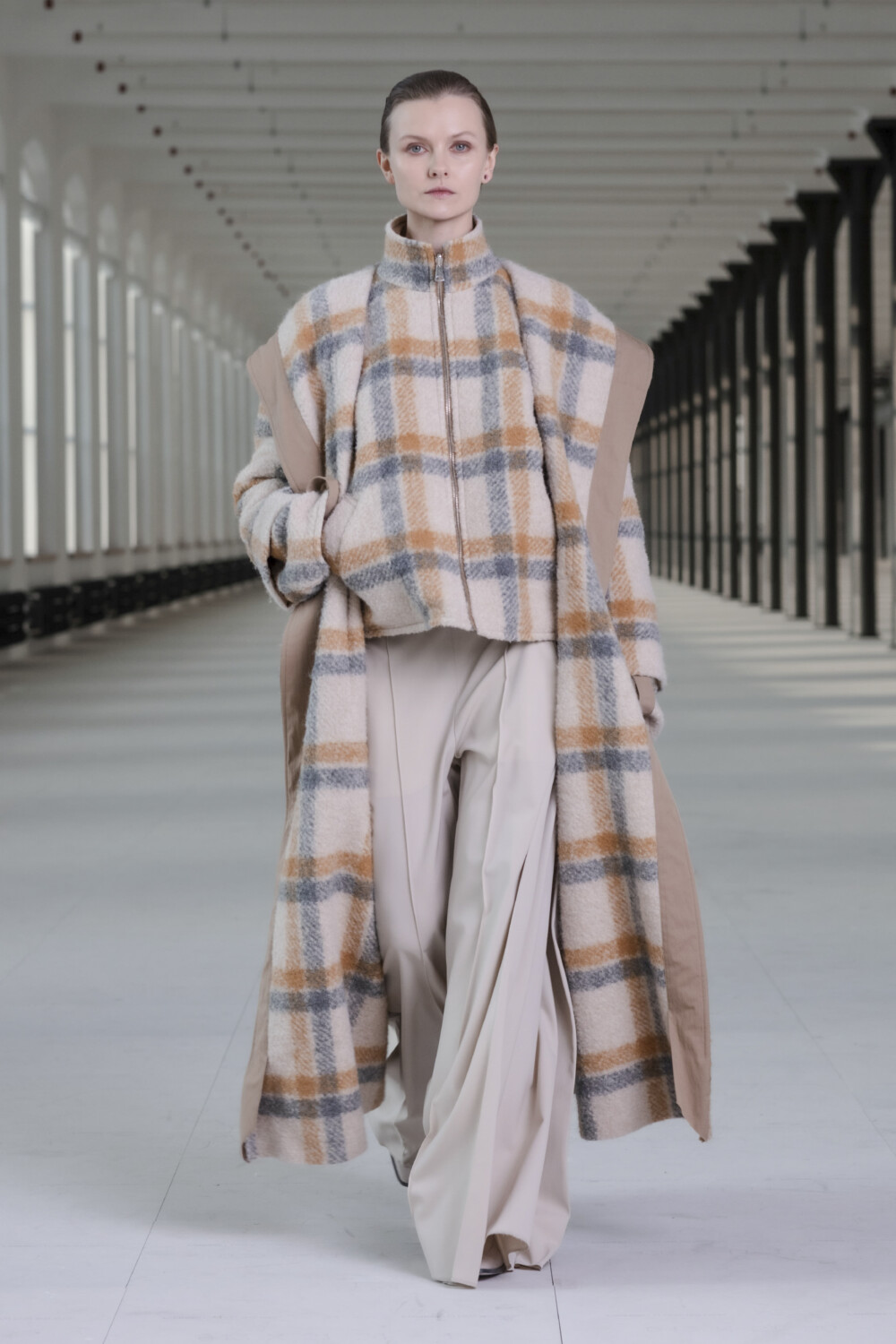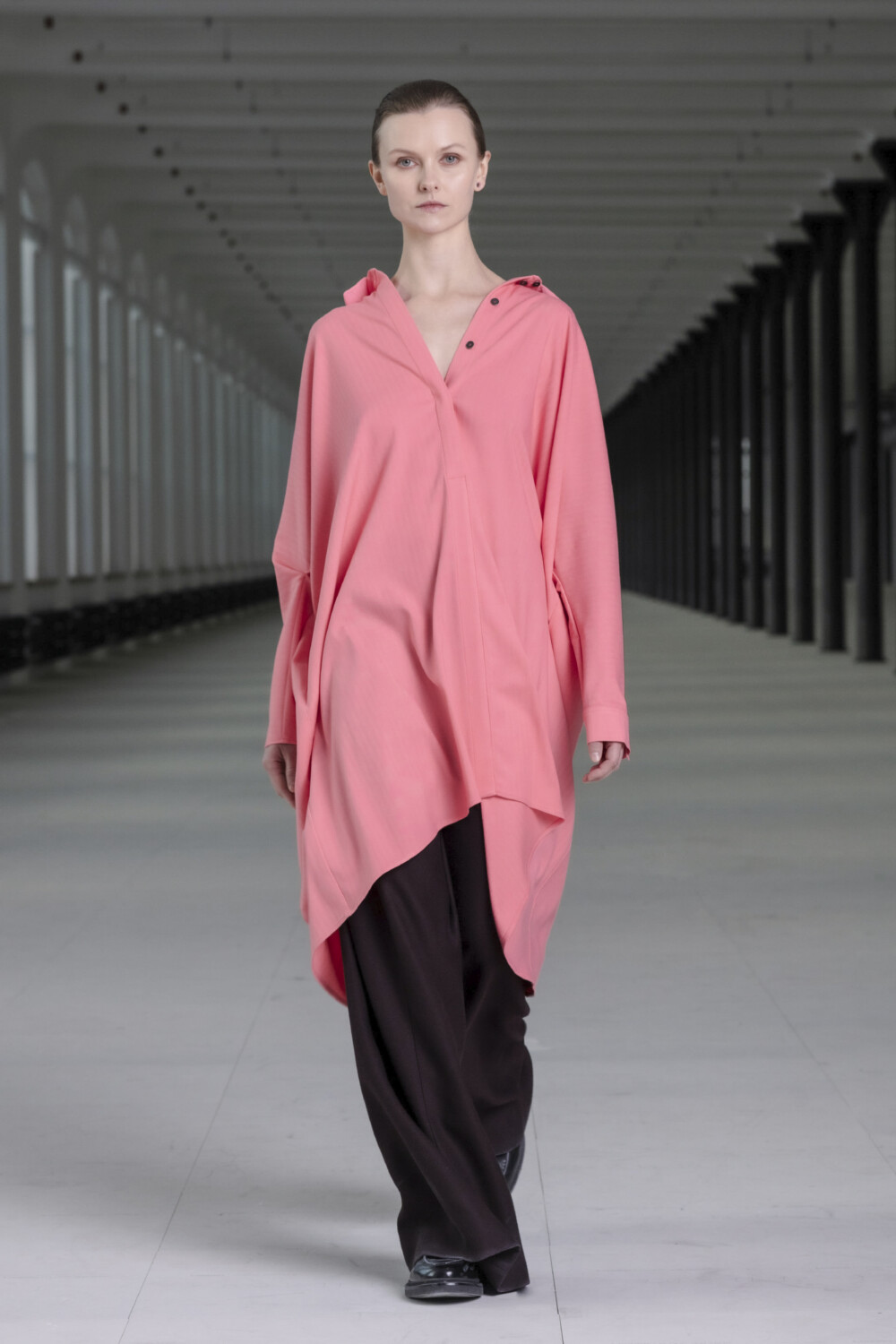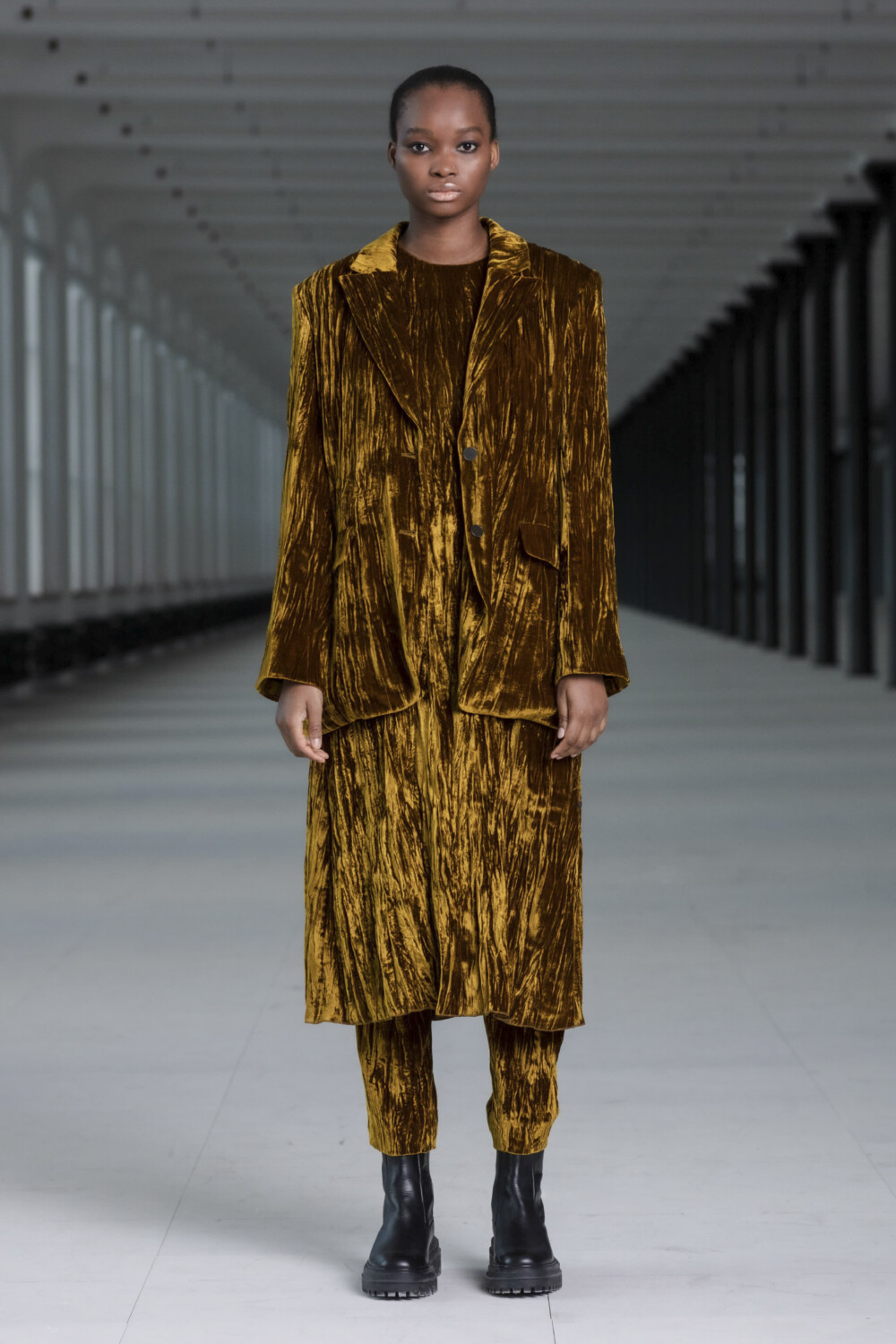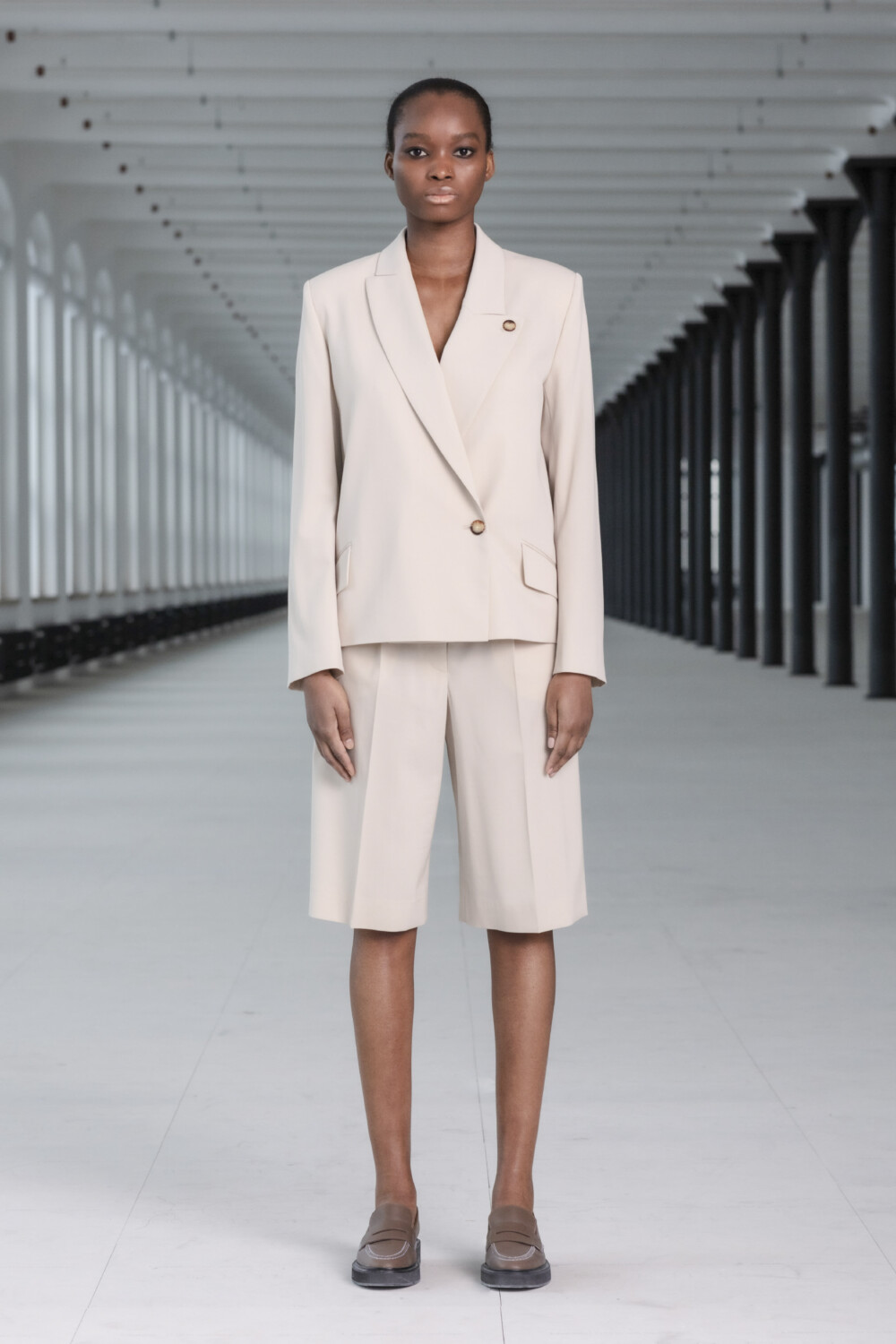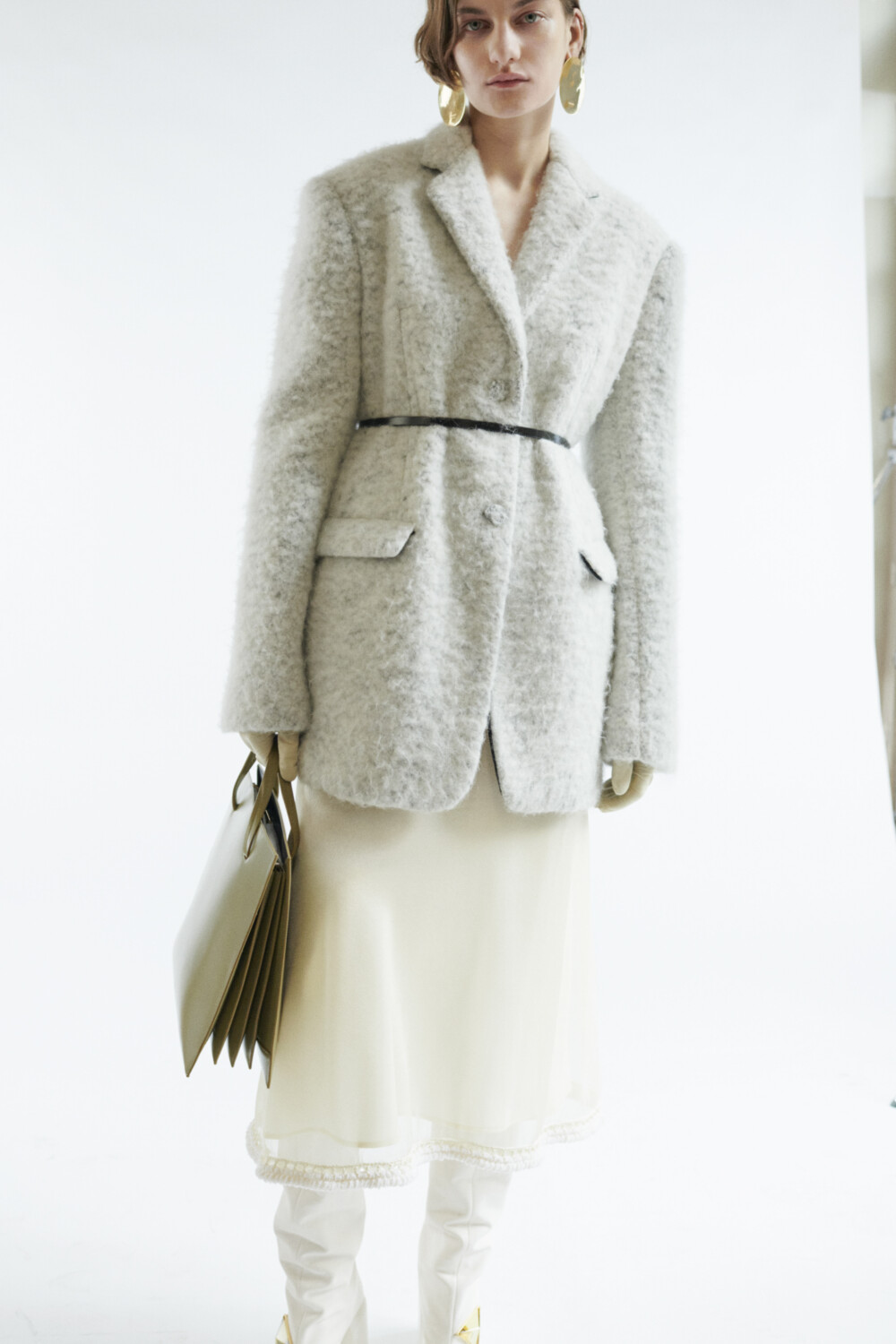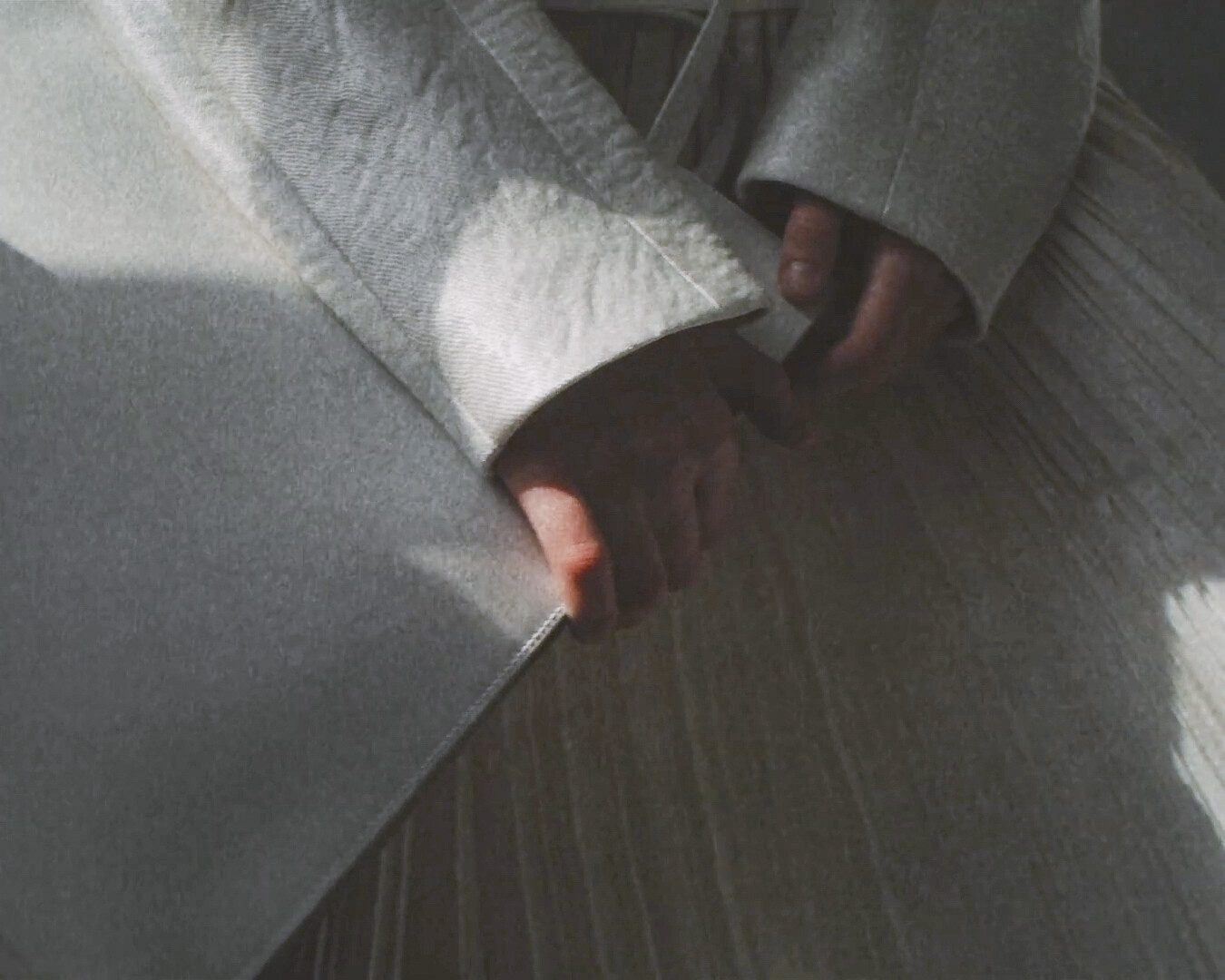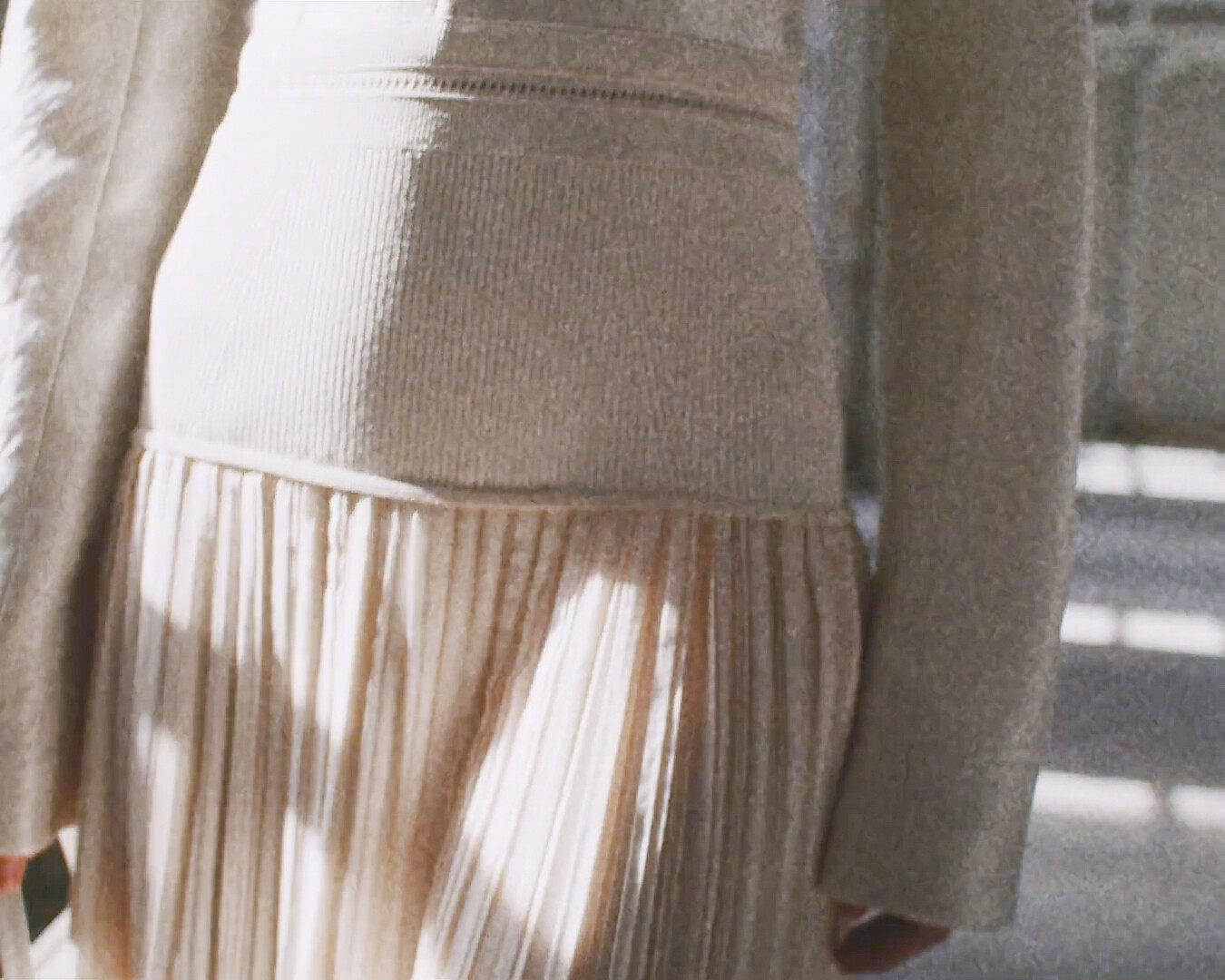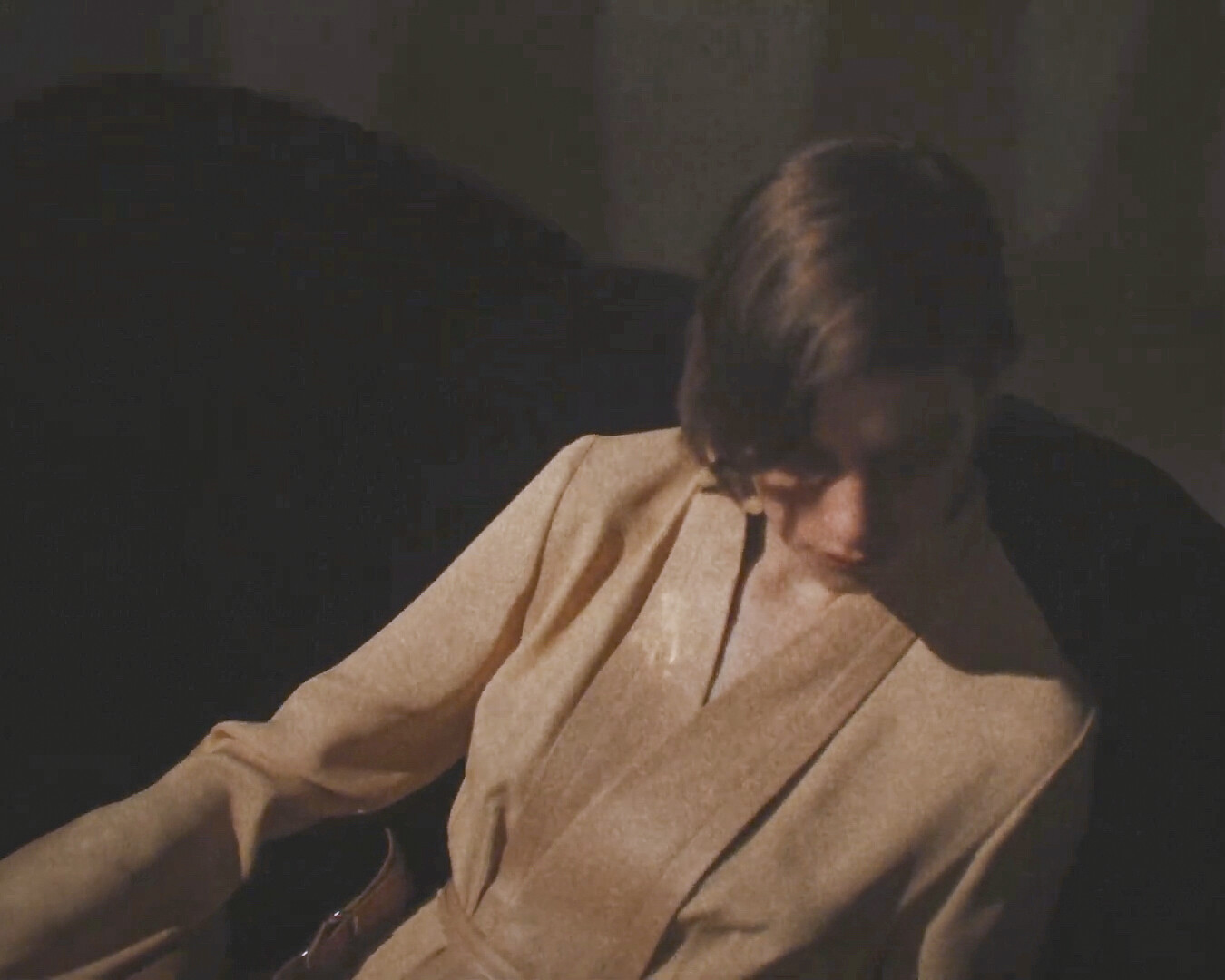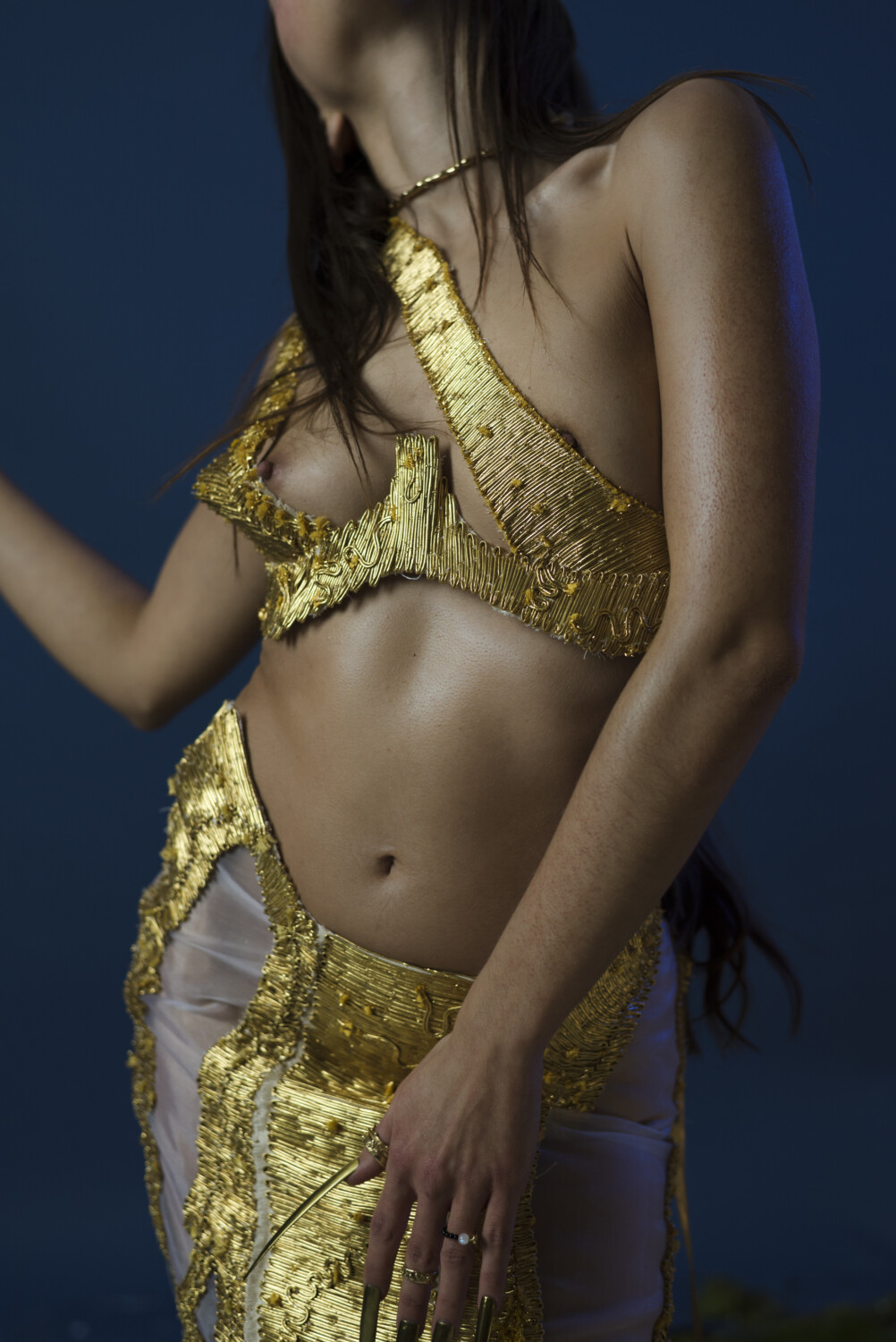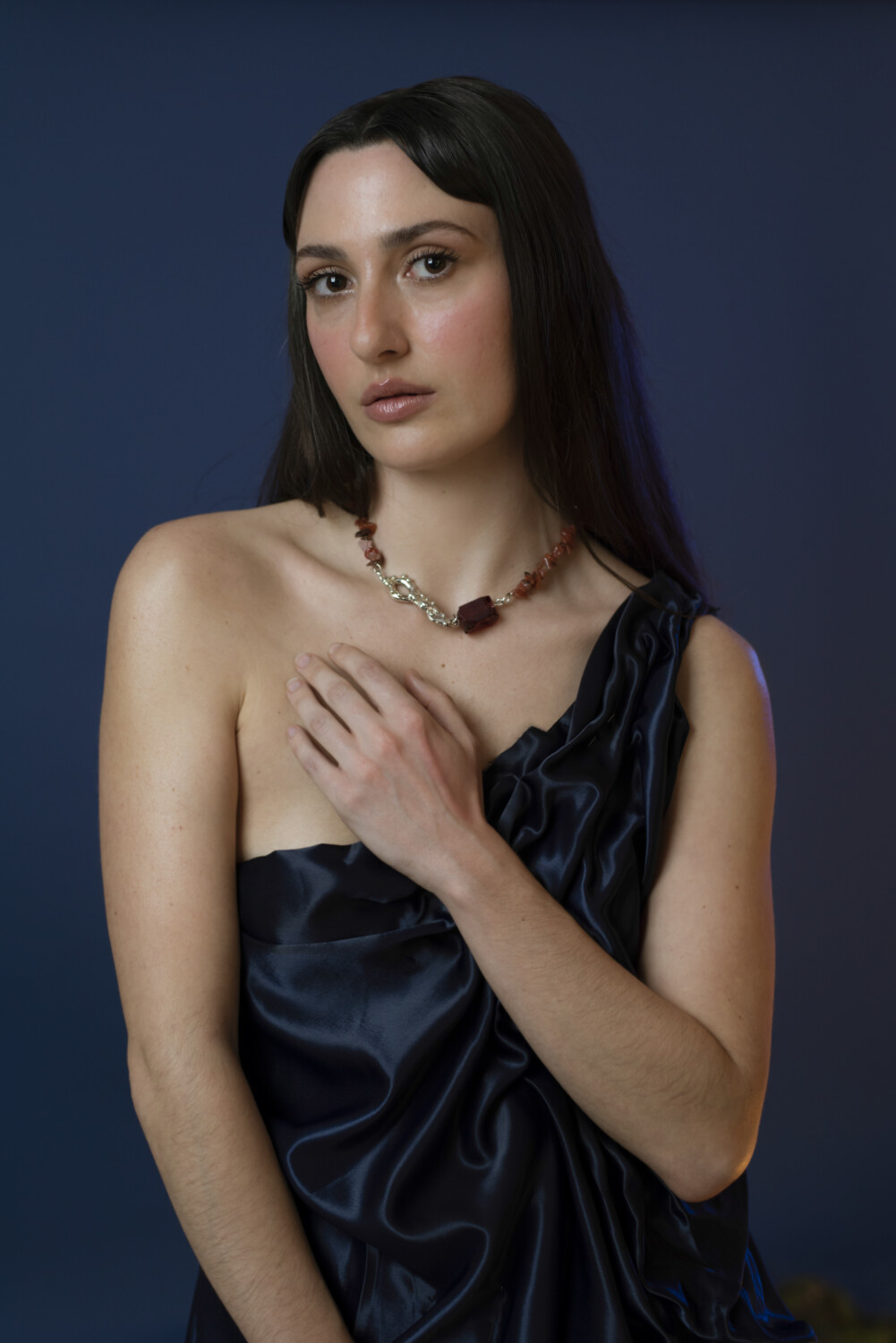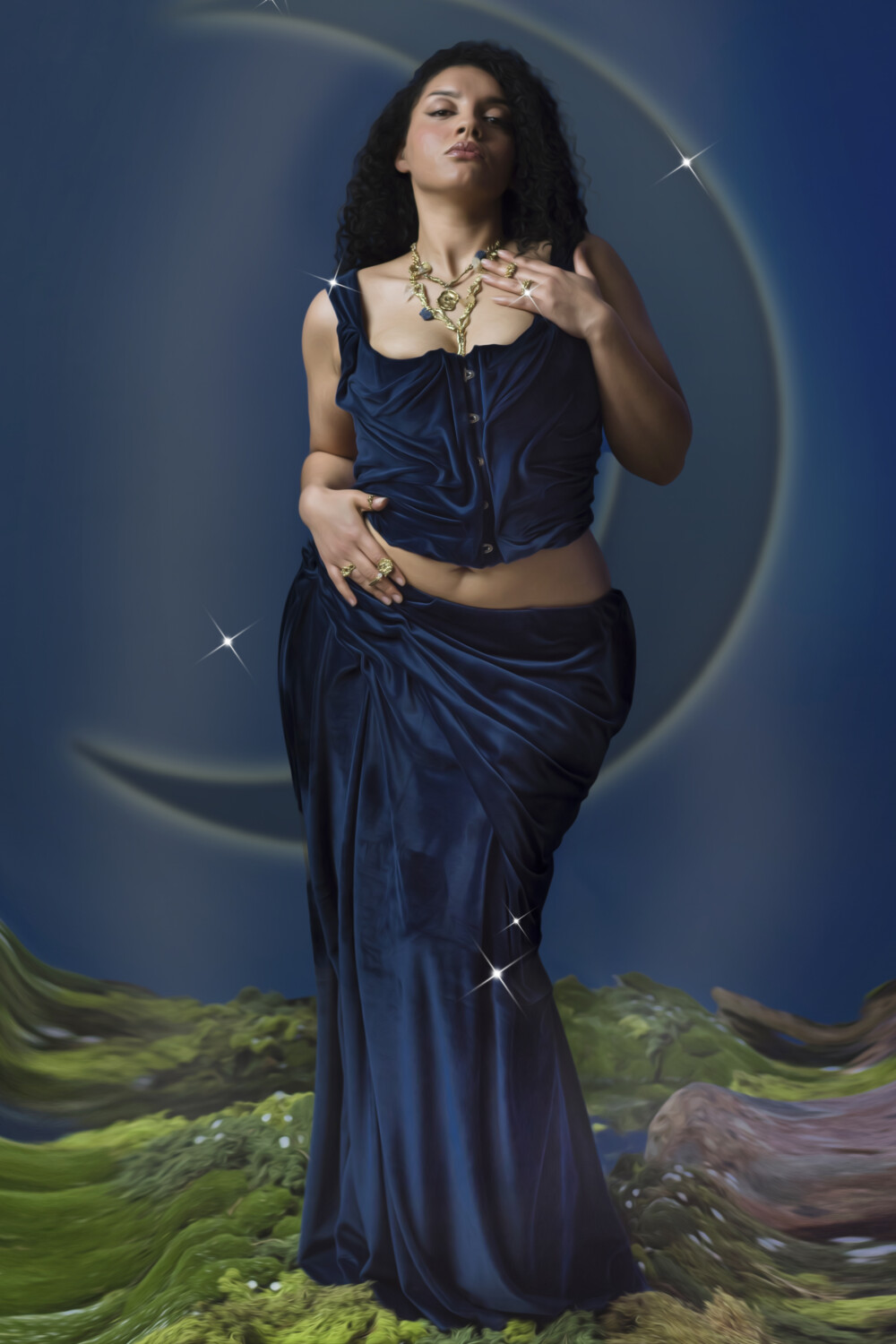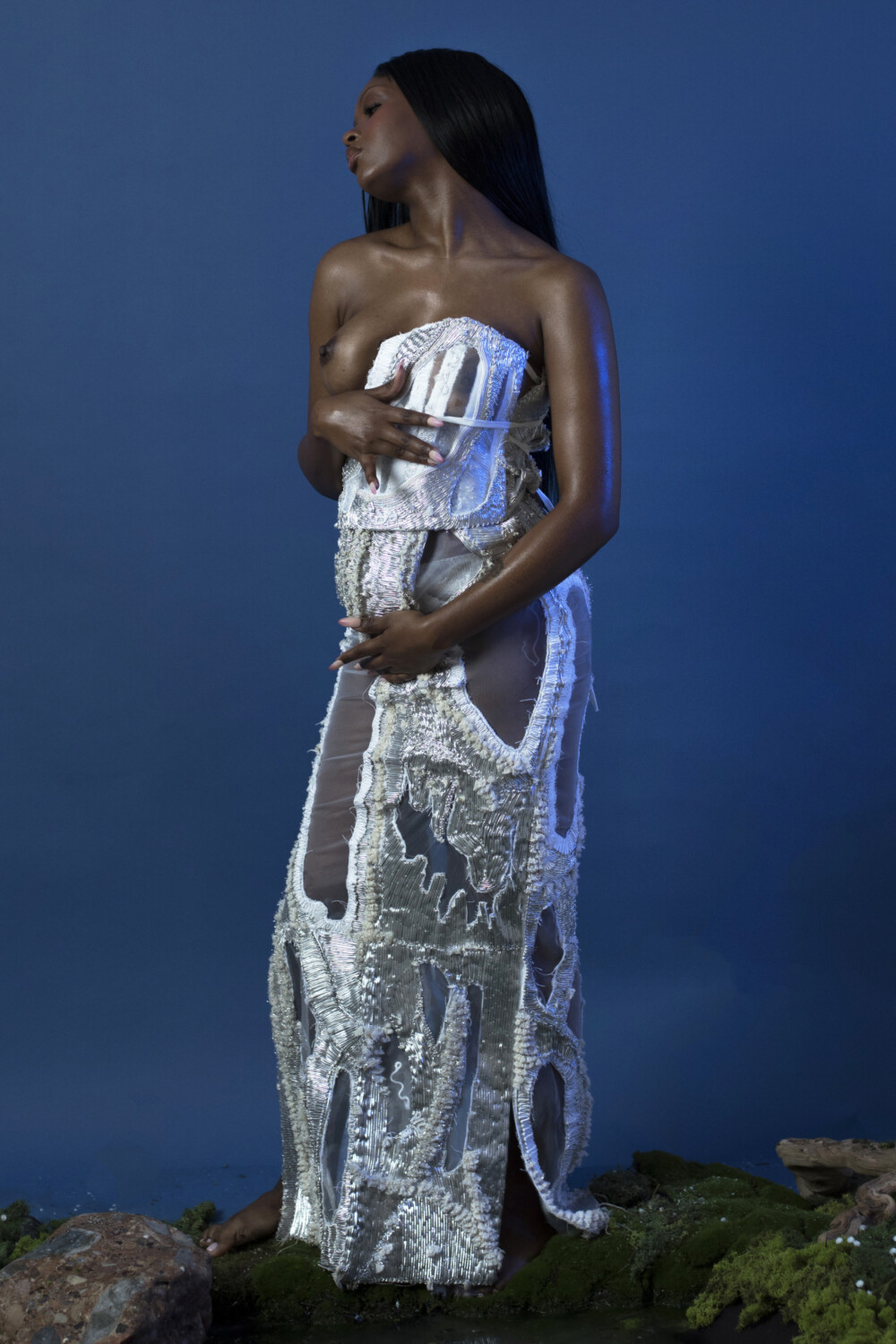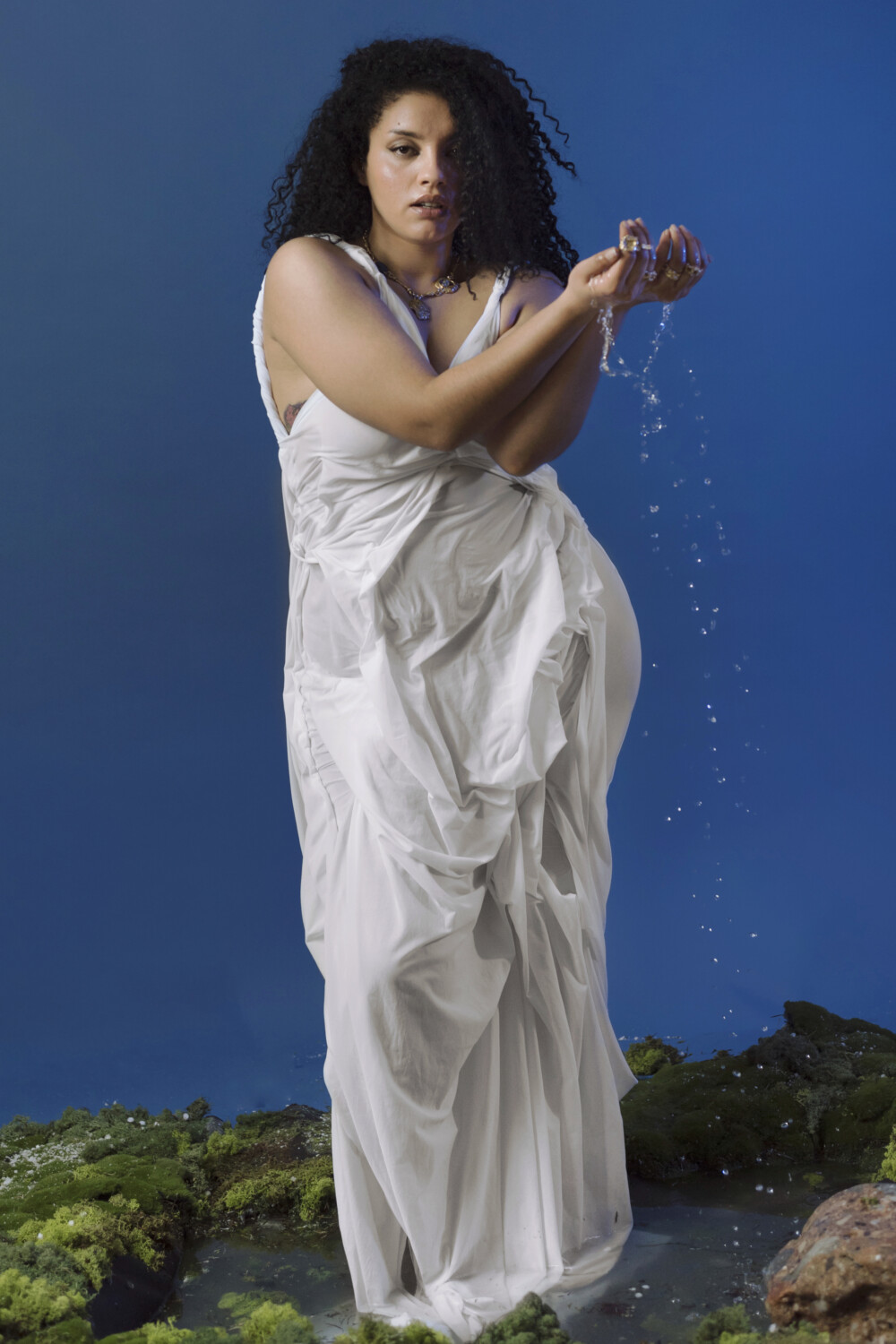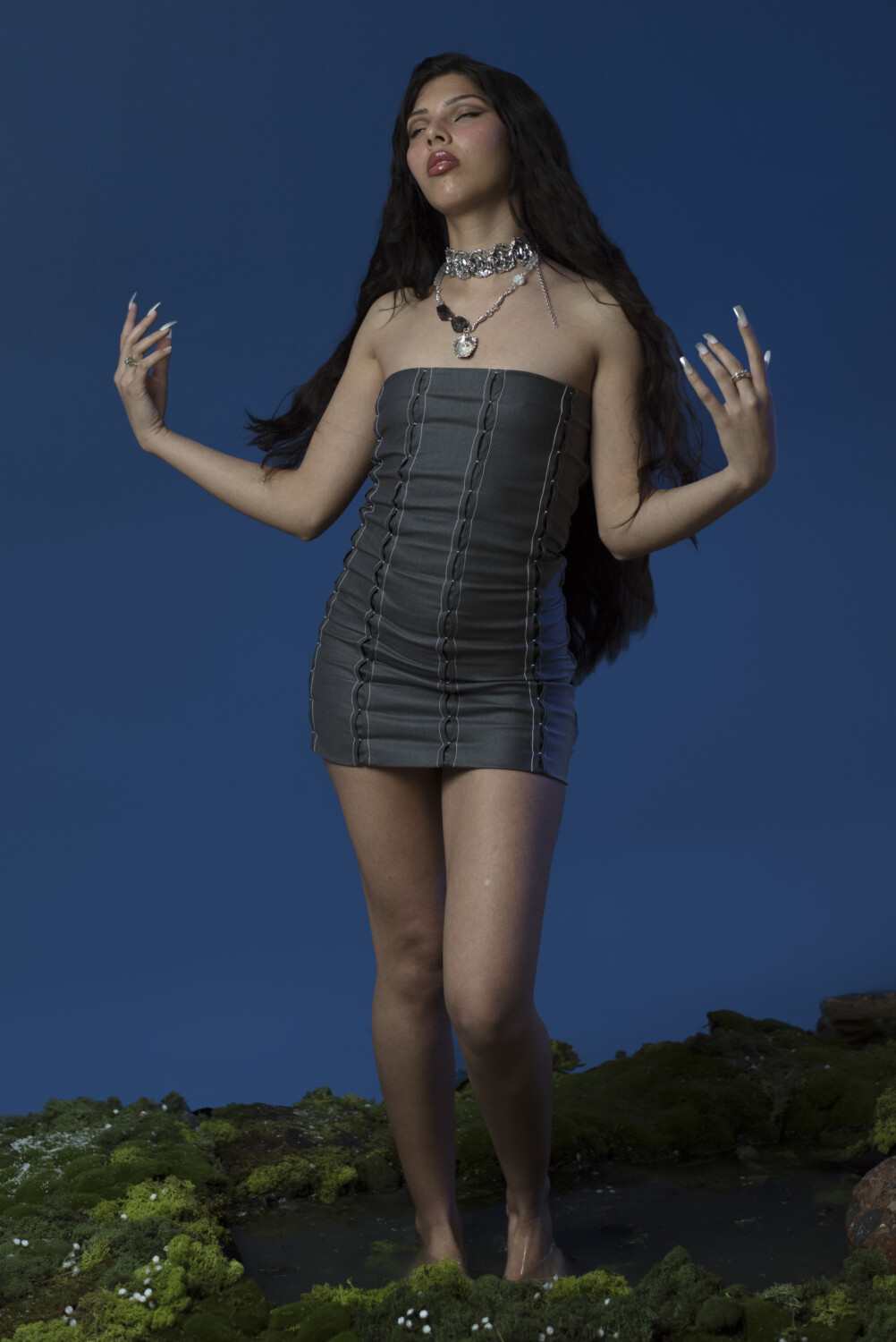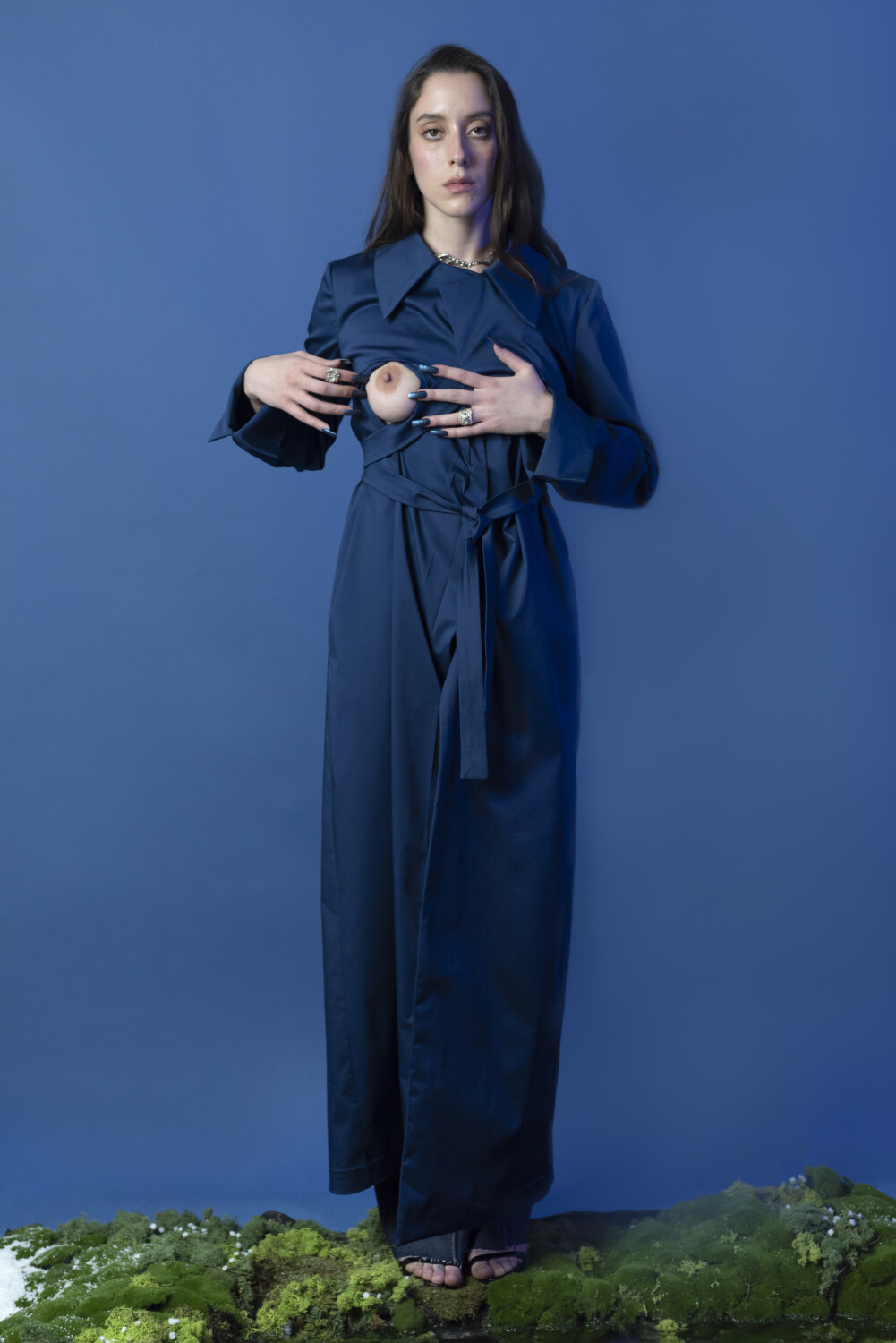Comfort of the Touch & Release from Physical Restrictions: how fashion changes in times of pandemic
In times of social isolation, of distant and impersonal digital contacts and suppressed freedom; of physical and mental boundaries which have become too narrow, we are all inevitably wondering how is the pandemic affecting fashion. It is now common practice for many fashion brands to place themselves at the service of the body, offering extensive research of the weave, the composition and the hand of fabric, in order to comfort the individual through the feeling of touch, but not only. Within a wider perspective, in an era marked by social restrictions, fashion in pandemic times is committed to releasing the body from useless physical burdens, by supporting it and favoring it throughout the everyday necessities.
That’s how Cecilie Bahnsen’s Fall/Winter 2021/2022 collection develops from the idea of luxury which is intrinsic to the sense of comfort and the beauty of the fabric – a veritable starting point for the conception of the collection. With an intimate, personal and relaxed feeling, it aims at transforming the wearer and conferring her solace with soft quilted silks, embossed surfaces and woolen fil coupé, precious knitted mohair with dévoré effects, fluid organza on the skin. Wide silhouettes prevail, mostly developing below the breast line; wrapping volumes are cinched at the waist as a reference to the Japanese obi, and a new interpretation of the anorak is offered within a romantic aesthetic with puffed sleeves.
In the same way, the simplicity of the garments and the smoothness of fabrics at Auralee are designed to suit our hurried lives: the volumes are breezy, soft-tailored, longline, mostly minimal and neutral-hued, making themselves an expression of gentle formality and composure of the body as well as of the state of mind.
At Nehera, the body progressively frees itself from physical restrictions. Be they separates or tailored suits, the volumes are let loose, wide, without tightening the waistline, but rather they let the body move freely. Dresses and blazers in cashmere and liquid velvet, worn on the –apparently- naked body, convey an idea of extreme comfort.
Nehera revives the heritage of the well-known Czechoslovak brand that flourished in the ‘30s and made history worldwide with its innovative design, cleaned up from superfluous details. In the same way as a century ago, when fashion was relieving itself from the corset, today the tactile relation between the body and the cloth is emphasized more than ever, and opens to the sensorial pleasure: the garment serves no longer –necessarily- as a public exhibition – even if it maintains itself within the lines of silent, calm, essential, understated elegance – but, on the contrary, the garment addresses now the inner-self, the body-self. “In a fashion world obsessed with MORE, Nehera uncovers the beauty in LESS”: it represents an ode to essence, timelessness and functionality beyond the evanescent trends.
Following the same inspiration, Jil Sander puts into play an ode to individuality, to the freedom of the body, where the clothing pieces acquire uplifting powers: light-hearted and meaningful at the same time, the practice of playing with the clothes and combining them through touch and sight is an answer to our “sensation of being multiple, manifold, of swinging between divergent needs and pleasures, of wanting to be everything we feel, giving space to our many selves”. A practice that reveals to be “intense, revealing, and eventually empowering”. In this way, the pristine tailoring of jackets and coats, in compact wools and leather, complement the soft, expanded volumes, and the knitted shaping all over the body.
Lastly, at Di Petsa, the body affirms its statement to the highest degree: by exasperating the feminine characters within a proudly feminist perspective, the body now demands full attention on itself, on its disproportions and sinuosity, placing themselves at center stage. The body shapes free themselves from physical boundaries, similarly, they release from aesthetic and social constructs that are soaked in the western society, offering an idea of body-positivity at the same time.
That of Di Petsa is an invitation to love one-self unconditionally, to embrace the strength that comes with self-acceptance of our body: a concept that the Greek designer defines as a “sense of homecoming”. The body is no longer at the mercy of the garment; yet, on the contrary, it’s the garment that – masterfully draped with the Wetlook technique – embraces the natural curves of maternity, challenging social denial and transforming weakness and vulnerability into strength.
By converting the current complexities into positive stimuli, the hope is that Fashion can strengthen the connection between the body and each of its individual needs.
Find more content on the Paris Fashion Week platform:
More on how the pandemic is affecting fashion: Comfort & Self-Care. Epitomes of luxury in 2021
These photos are only a low resolution demonstration.
If you want to use the hight resolution, you must subcribe to our images database. You may ask us any commercial information simply filling out our Contact Form. For editorial use only.
Follow us with the hashtag #showbitcom



